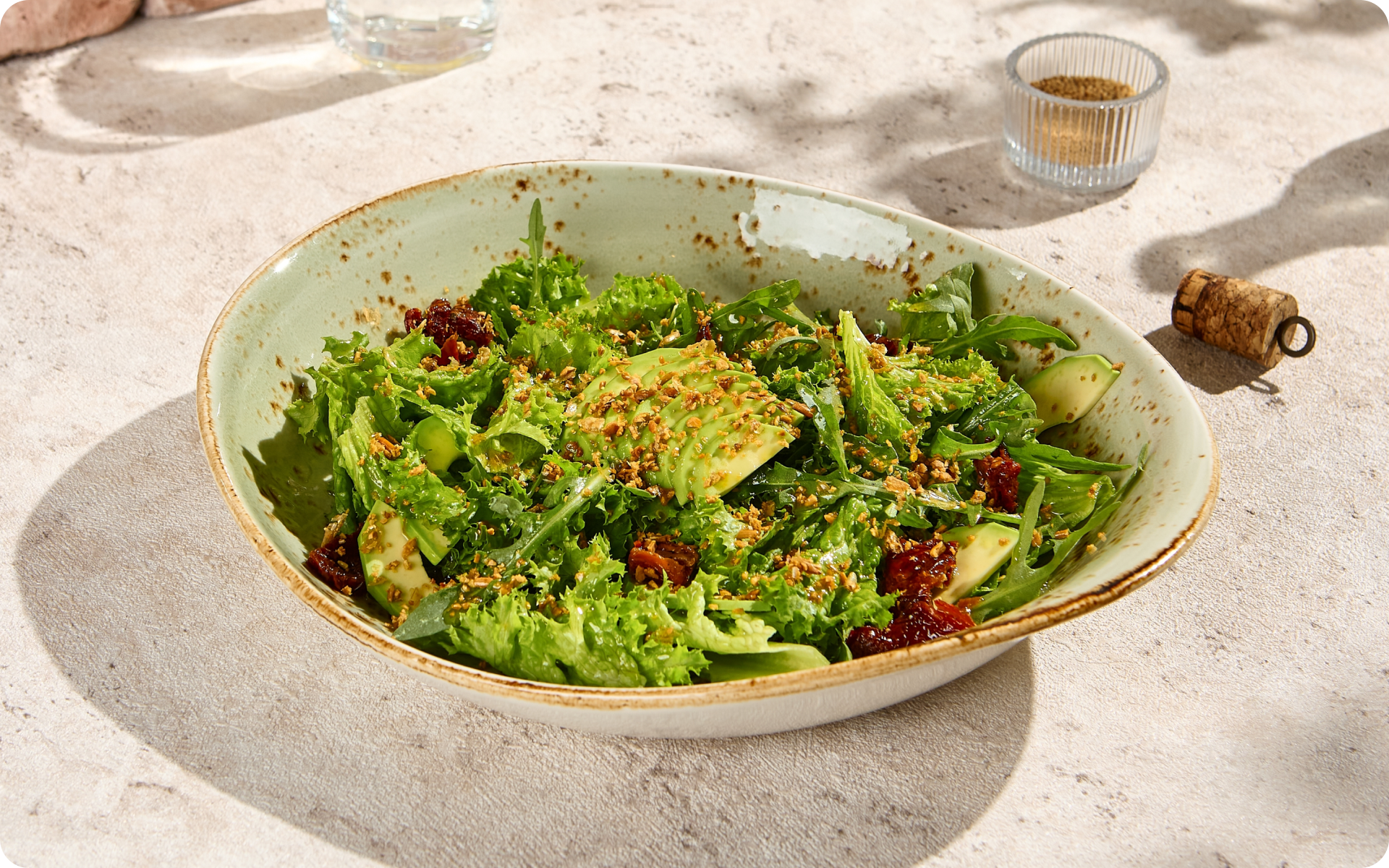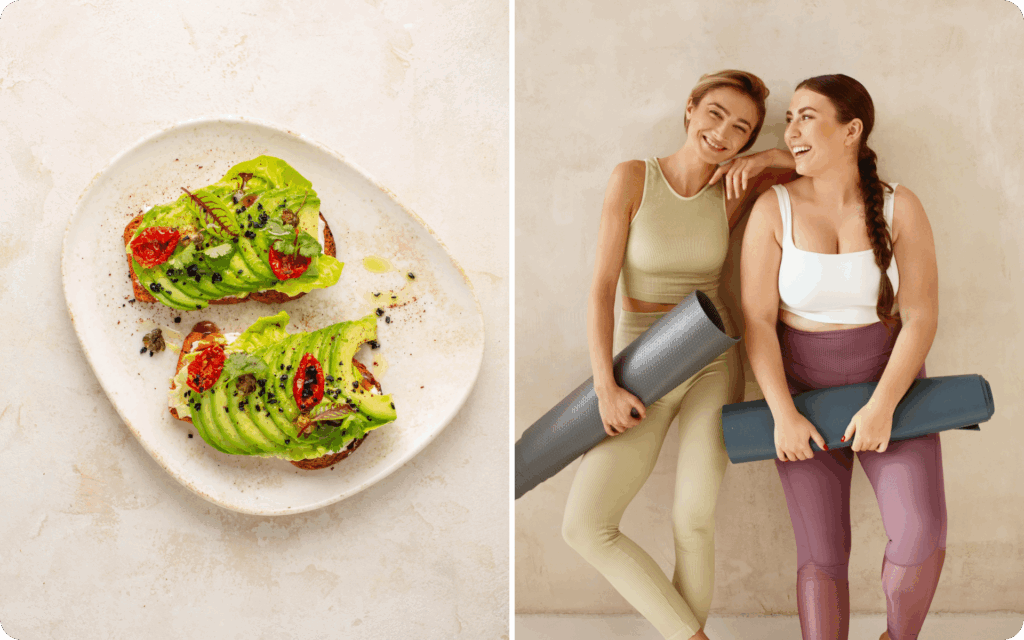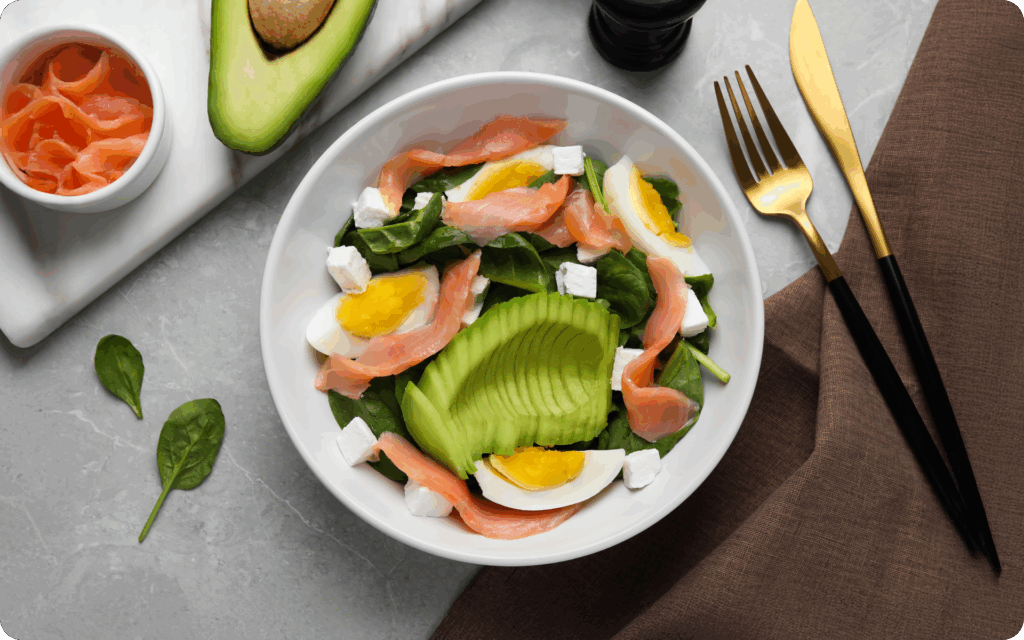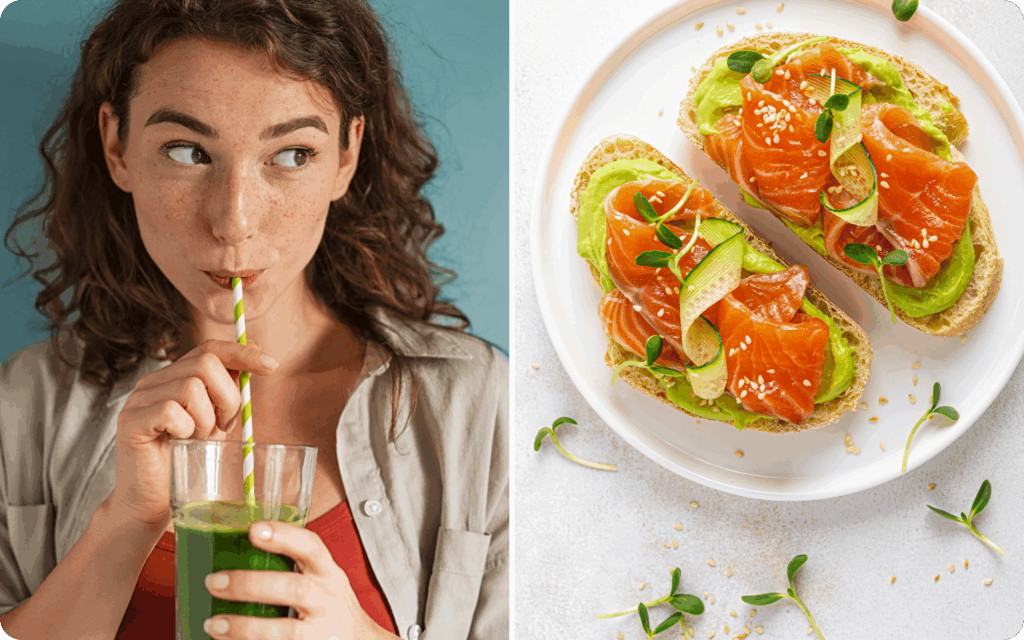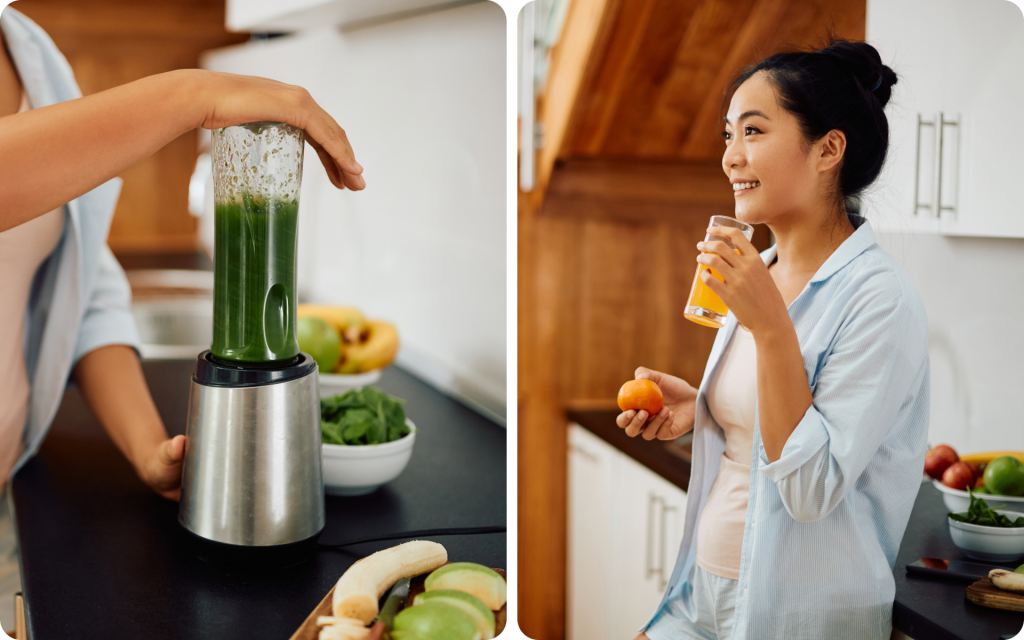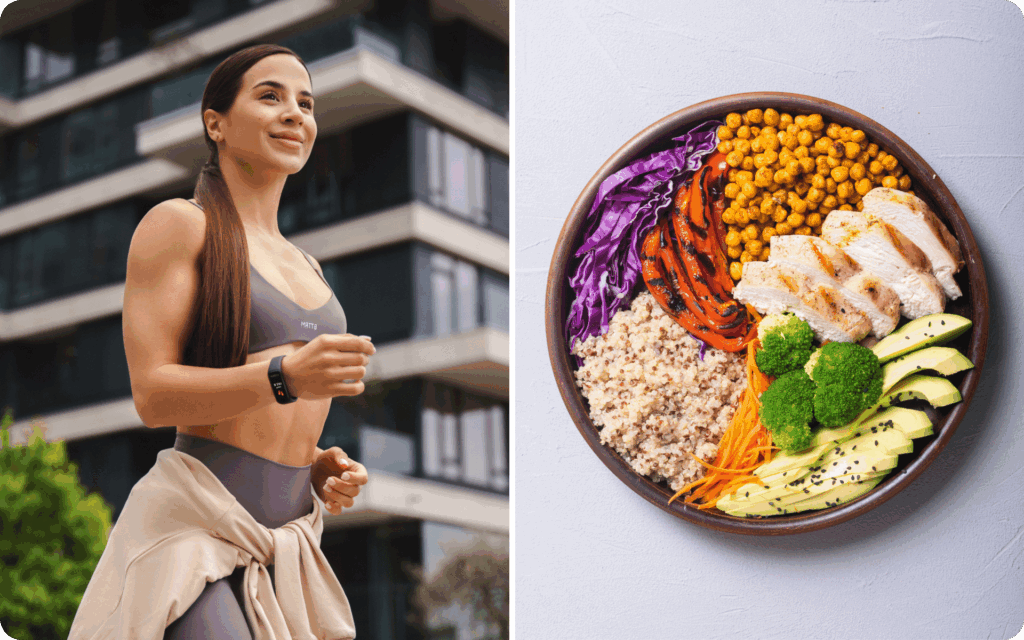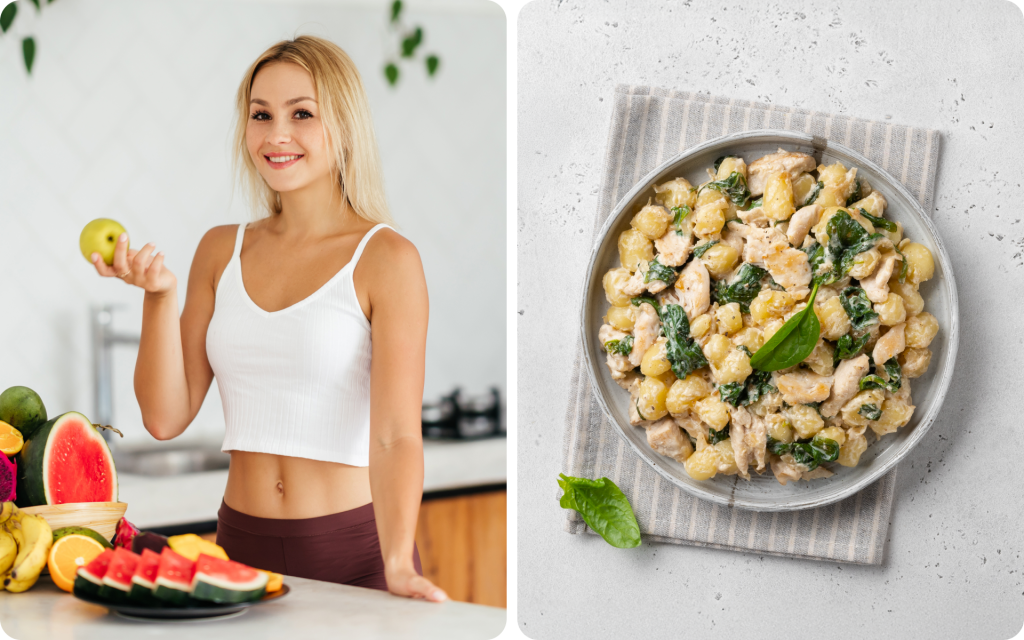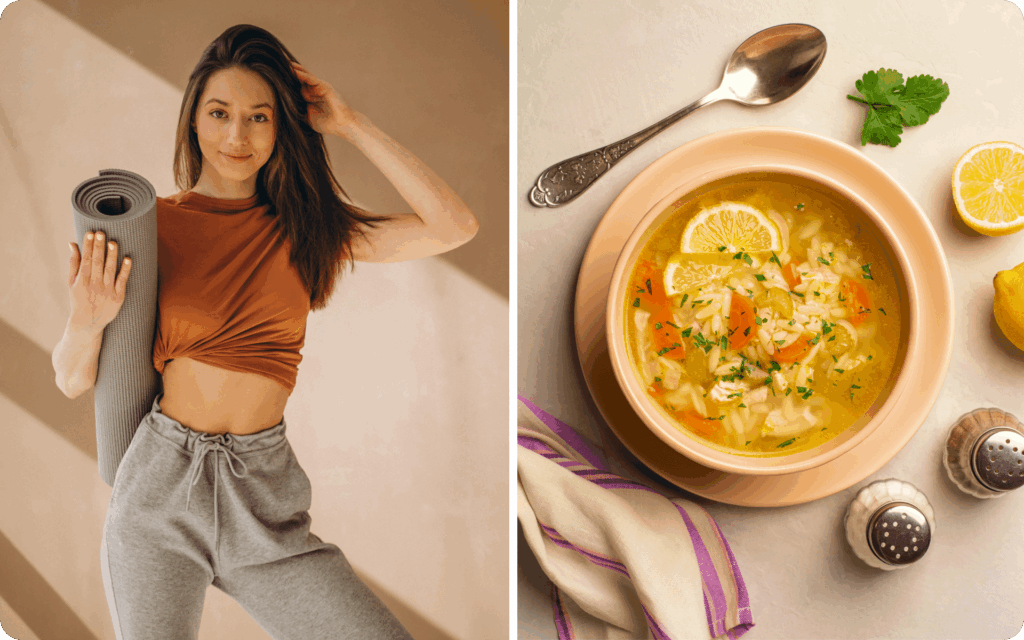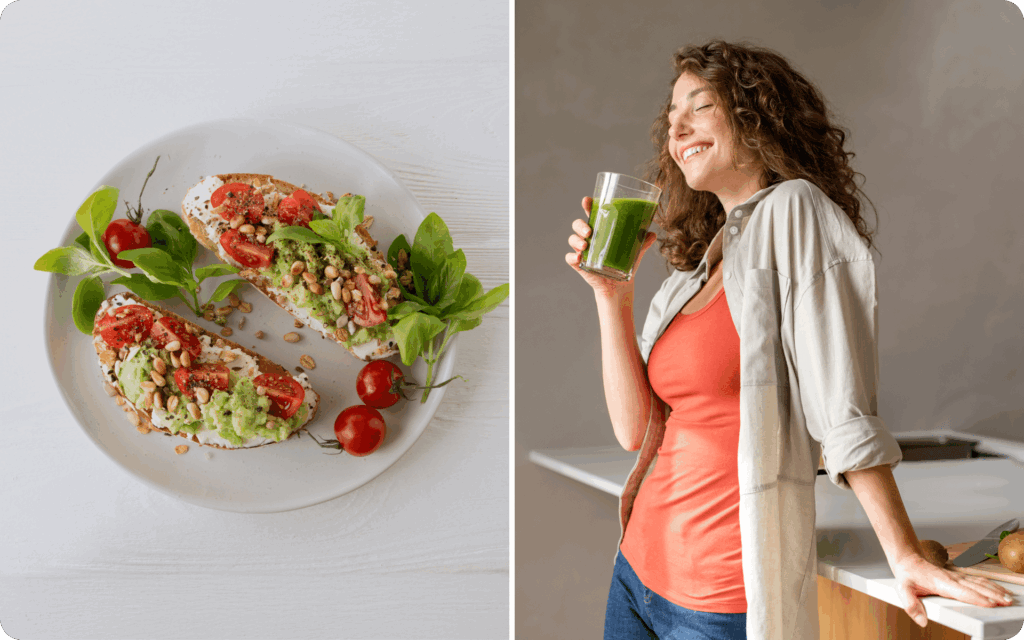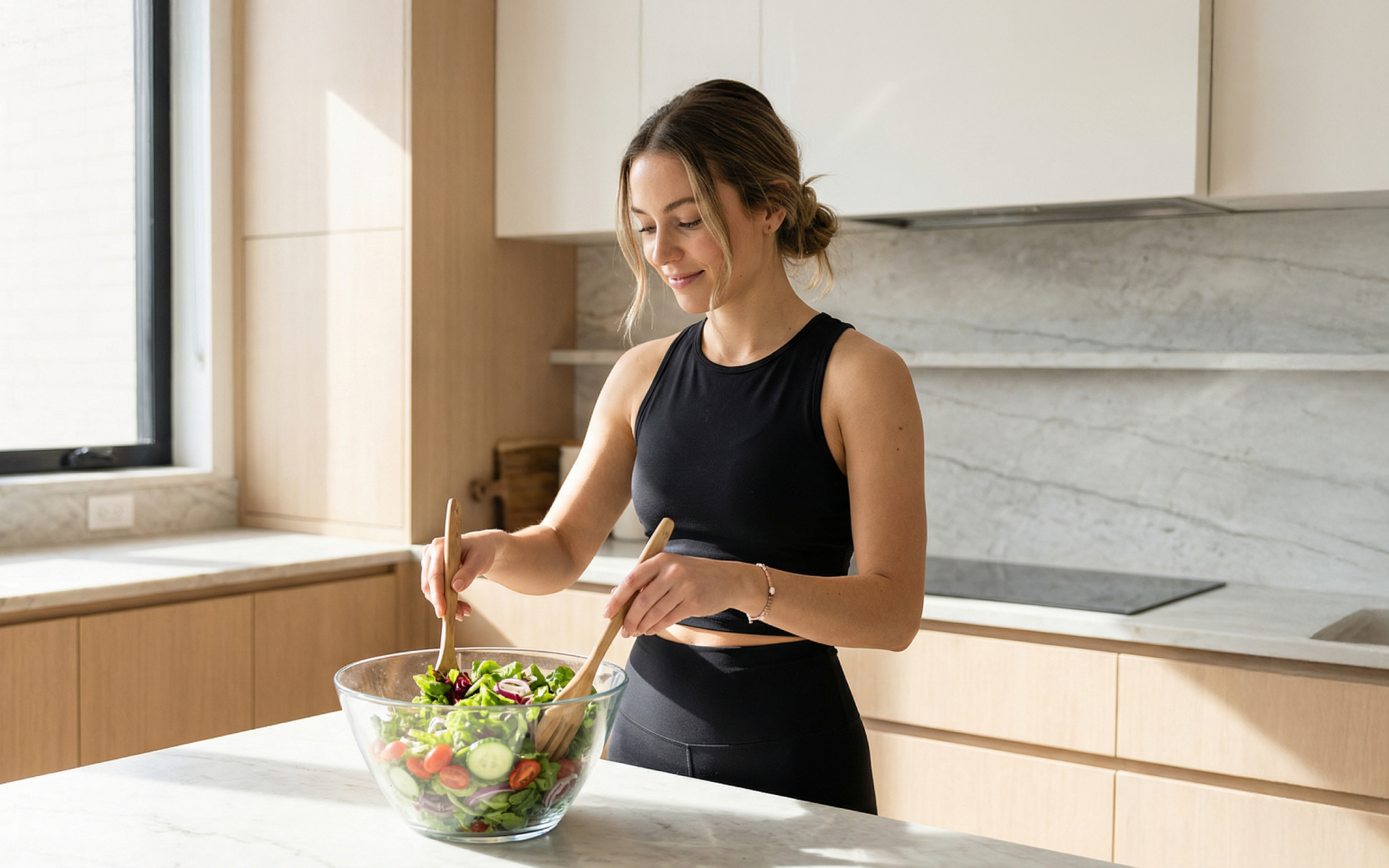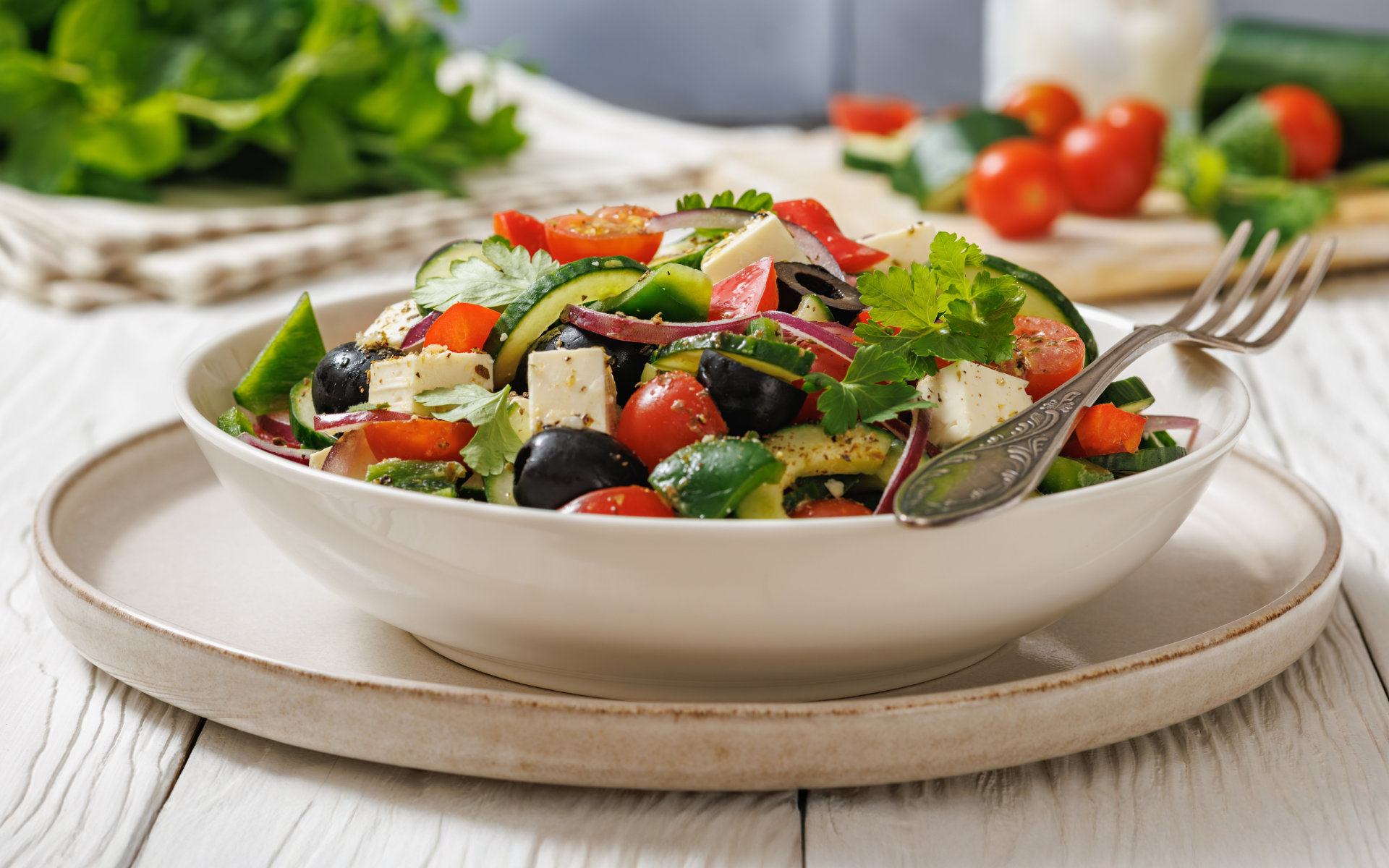It may come as a surprise to many readers, but some people want to gain weight.
There may be several reasons for wanting to gain weight, such as:
- Performance enhancement
- Athletes and bodybuilders want to build muscle.
- Gaining weight after an illness, especially if you’re underweight, can help the healing process.
- A fast metabolism makes it challenging to maintain weight and requires individuals to consume more calories to stay healthy.
Whatever the reason, consider exploring how a high-calorie meal plan can work for you. It can help you achieve your weight goals without overdoing it.
Of course, you’ll have to take other measures, like exercise, to reach your desired weight. But once you get accustomed to eating a rich, nourishing, high-calorie meal, you’ll be unlikely to turn back. When prepared right, high-calorie foods can be tempting and become a staple in people’s lives. Information and moderation are the two key factors that’ll guide you in creating healthful, high-calorie foods for bulking.
This article provides tips on planning high-calorie meals to help you stay on track.
Let’s begin!
What Is A Nutrient-Dense High-Calorie Meal Plan?
A nutrient-dense, high-calorie meal plan is designed to help you healthily gain weight by focusing on foods rich in calories and essential nutrients.
A high-calorie meal plan doesn’t revolve around eating more food without thinking.
Instead, you focus on eating the right foods that:
- Fuel your body
- Support muscle growth
- Boost overall health (1).
Instead of filling up on empty calories from sugary snacks or ultra-processed foods, this meal plan includes high-calorie foods for weight gain, packed with vitamins, minerals, healthy fats, protein, and complex carbohydrates.
Nutritious foods include:
- Nut butter
- Avocados
- Olive oil
- Fatty fish
- Full-fat dairy
- Whole grains
- Lean meats
These foods can give you more calories per bite and support your body’s needs (2).
The goal is to increase your calorie intake while still nourishing your body.
For example, adding a spoonful of peanut butter to your smoothie, cooking with extra-virgin olive oil, or snacking on trail mix can help you increase your calories without relying on unhealthy fast food.
Read more: Healthy Fitness Meals to Fuel Your Workout Every Day
How To Create A High-Calorie Meal Plan?
By now, we’re clear that a high-calorie meal plan doesn’t mean you mindlessly eat everything in sight. You must be thoughtful and intentional about the choices you make to support your optimal health.
High-calorie meals for muscle gain may differ from high-calorie foods for weight gain.
Take some time to determine your goals and make an informed decision.
The tips listed below can help you create a high-calorie meal plan that’s effective and easy to follow:
- Know Your Calorie Target
Start by figuring out how many calories your body needs to maintain its current weight, then add 300-500 extra calories per day to gain weight gradually.
You can use a calorie calculator online or consult with a registered dietitian to obtain a more personalized estimate.
The BetterMe: Health Coaching app will provide you with a host of fat-frying fitness routines that’ll scare the extra pounds away and turn your body into a masterpiece! Get your life moving in the right direction with BetterMe!
- Focus On High-Calorie Foods For Weight Gain
Choose foods that are both calorie-dense and nutritious.
A few of the best options include:
- Avocados
- Whole eggs
- Dried fruits, nuts, and seeds
- Fatty fish like salmon or mackerel
- Full-fat dairy (milk, cheese, yogurt)
- Nut butter (peanut, almond, cashew)
- Whole grains (quinoa, oats, brown rice)
- Healthy oils (olive oil, canola oil, and other vegetable oils)
These ingredients pack in calories without leaving you feeling overly full.
- Eat More Often
Rather than sticking to 3 meals a day, aim for 5-6 smaller meals or snacks spaced throughout the day. This dispersed amount helps you meet your calorie goals without overwhelming your stomach (3).
- Add Calories To Meals You Already Eat
Level up your usual meals by:
- Drizzling olive oil over cooked veggies
- Using whole milk instead of skim or water
- Mixing nut butter into oatmeal or smoothies
- Topping toast or crackers with avocado or hummus
- Adding shredded cheese to eggs, pasta, or casseroles
- Make Smoothies And Shakes Your Best Friend
Drinking your calories can be easier than eating them.
Blend smoothies with:
- Milk
- Oats
- Bananas
- Greek yogurt
- Protein powder
- Nut butter for a delicious, high-calorie boost.
Planning is key to staying on track with your weight gain goals.
Prepping meals and snacks in advance helps you avoid skipped meals or last-minute choices with empty calories. Keep a simple shopping list and a solid plan so you’re always prepared. And don’t forget to track your progress. Using a food journal or app makes it easier to see what’s working and when it’s time to adjust.
How To Balance Macros In A High-Calorie Meal Plan?
Balancing macros is crucial in a high-calorie meal plan.
You must achieve the perfect proportion of all nutrients to ensure you reach your goal.
Macros include:
- Carbohydrates
- Proteins
- Fats
The proper ratio helps fuel your body, support recovery, and encourage lean muscle growth (4).
Let’s say you’re following a plan focused on high-calorie foods for bulking. Your macros must support both your energy needs and muscle building (5).
The table below may help you crack the code for healthy weight gain with high-calorie meals and balanced macros:
| Macronutrient | Recommended % of Total Calories | Common High-Calorie Sources |
|---|---|---|
| Carbohydrates | 45-65% | Rice, oats, pasta, whole grains, fruits, legumes, potatoes |
| Protein | 10-35% | Chicken, beef, eggs, tofu, beans, lentils, protein shakes, Greek yogurt |
| Fats | 20-35% | Avocados, nuts, seeds, olive oil, full-fat dairy, and nut butters |
It’s natural to feel like you don’t know anything when you first start exploring how to balance the macros in your diet. Consulting a registered dietitian can be a good starting point for beginners.
Besides this, a few tips that may help you tread ahead in this journey are:
- Build balanced plates: Every meal should include a source of carbs, protein, and fat.
- Choose nutrient-dense options: Prioritize high-calorie foods for bulking that also deliver vitamins and minerals.
- Use healthy add-ons: Cook with oils, top meals with seeds or cheese, or add avocado to boost calories and fat.
- Don’t neglect carbs: Whole grains, fruits, and starchy vegetables should be a regular part of your plan.
- Track and tweak: Use a food tracking app to monitor macros and adjust as needed.
It’s important to note that high-calorie meals may promote weight gain, but the macronutrient balance shapes whether that gain is lean muscle or mostly fat.
Protein provides the building blocks for muscle tissue, and resistance training offers the signal for your body to build muscle.
These natural factors suggest that when your goal is healthy weight gain, including muscle gain, an adequate intake of protein, alongside carbohydrates and fats in calorie-dense meals, is essential, as is regular exercise.
Read more: Real Food Vs. Processed Food: How Small Swaps Can Change Your Entire Diet
What Foods Belong In A Healthy High-Calorie Meal Plan?
As stated above, following a high-calorie meal plan should focus on balancing calories and nutrients to maintain a healthy diet. Junk food may provide calories, but it often lacks essential nutrients that help your body grow, recover, and function properly.
Start with healthy fats, such as avocados, olive oil, nut butters, and full-fat dairy products. These pack a calorie punch without making you feel overly full (7).
Then add lean proteins, such as chicken, eggs, Greek yogurt, and salmon, to help with muscle repair and satiety.
Don’t skip the carbs, either. Whole grains, rice, oats, potatoes, and even fruits are all excellent options for energy and weight gain recipes (8).
Some of the best food ideas to include are:
- Whole grains like quinoa, oats, or brown rice
- Dried fruits and nuts for easy, on-the-go snacks
- Full-fat dairy, including milk, cheese, and Greek yogurt
- Healthy oils like olive or avocado oil added to salads or cooked dishes
- Nut butters (peanut, almond, or cashew) on toast or mixed into smoothies
A solid high-calorie breakfast could be something like oatmeal made with whole milk, topped with peanut butter, banana slices, and a handful of walnuts.
It’s quick, tasty, and full of nutrients. Remember, high-calorie foods don’t have to be unhealthy. It just means being mindful and wise about what you put on your plate.
How Many Meals Per Day Optimize A High-Calorie Plan?
There’s no one-size-fits-all answer, but if your goal is to gain weight steadily, eating 5-6 meals daily is usually more effective than sticking to 3 big ones.
Spreading your calories out over the day makes it easier to eat more without feeling overly stuffed or sluggish.
Instead of forcing down huge portions at once, you can eat 3 main meals (breakfast, lunch, and dinner) and then add 2-3 snacks in between. These mini-meals can be calorie-dense, but they are still manageable.
Following a high-calorie meal plan shouldn’t feel like a burden.
This approach of breaking down the meals takes the pressure off having to cram all your calories into just a few sittings. You can plan your next meal mindfully and evaluate if you’re spreading your macros correctly.
How To Add Calories To Meals Without Feeling Stuffed?
The thought of changing all your meals at once can be overwhelming.
It signals the need for a long grocery list and prolonged hours in the kitchen.
How about sneaking in the extra calories with small changes that don’t add much volume?
Some easy ways to make it happen are:
- Use healthy fats generously: Add olive oil, avocado, or butter to cooked veggies, pasta, or toast. Just one tablespoon of olive oil has around 120 calories (8).
- Top it off: Sprinkle cheese, seeds, or chopped nuts on salads, soups, eggs, and even toast.
- Go full-fat: Opt for full-fat versions of milk, yogurt, and cheese instead of their low-fat counterparts. They’re more satisfying and higher in calories.
- Blend your calories: Smoothies are a great way to consume extra calories without feeling heavy. Toss in nut butter, oats, Greek yogurt, and banana.
- Snack smart: Keep high-calorie, nutrient-rich snacks on hand, such as trail mix, granola bars, or dried fruits. These snacks are small but mighty in calories.
- Double up ingredients: Add extra egg to your scramble, spread peanut butter and honey on your toast, or mix cream into your mashed potatoes.
These minor adjustments help you increase your daily calorie intake without consuming massive meals. It’s all about layering in calorie-rich, nutrient-dense foods in a natural, satisfying way, not a burden.
What Are High-Calorie Meal Prep Ideas For Busy People?
It can be challenging for busy individuals to follow a diet that requires lengthy kitchen hours. It’d be better to find options that are easy to grab, reheat, or eat on the go.
A weight gain meal plan for females or males, especially busy ones, could utilize these quick recipes:
- Overnight Oats With Extras
Mix rolled oats with whole milk or Greek yogurt, chia seeds, nut butter, honey, and sliced banana. Refrigerate overnight.
- Protein-Packed Pasta Bowls
Cook a large batch of whole wheat or regular pasta and toss it with olive oil, grilled chicken or ground beef, vegetables, and parmesan. Portion it out into containers for easy lunches or dinners.
- Rice And Bean Burrito Bowls
Layer brown rice, black beans, corn, shredded cheese, avocado, and a protein like shredded chicken or beef. These bowls are super satisfying and perfect for freezing ahead of time.
BetterMe will keep you laser-focused on your weight loss journey! Nutrient-packed meal plans, fat-blasting workouts, galvanizing challenges and much more. Try using the app and see for yourself!
- Smoothie Freezer Packs
Pre-portion fruit, spinach, oats, protein powder, and nut butter into freezer bags. In the morning, just blend with milk for a quick, calorie-dense drink you can take on the go.
- High-Calorie Snack Boxes
Prepare containers filled with nuts, cheese cubes, hard-boiled eggs, crackers, dried fruit, and even a few squares of dark chocolate.
- Casseroles And Baked Dishes
Use full-fat ingredients to make comfort meals like lasagna, baked mac and cheese, or shepherd’s pie. They’re easy to freeze and reheat when you don’t have time to cook from scratch.
- Stuffed Wraps Or Sandwiches
Use hearty bread or tortillas and fill them with calorie-dense combinations like tuna salad with mayonnaise, chicken and avocado, or hummus with roasted vegetables. Wrap them up for grab-and-go meals.
To make your high-calorie meal prep even more effective, consider cooking in bulk so you only need to prepare a few times a week. This preparation period saves time and keeps you consistently stocked with ready-to-eat meals.
How To Track Calories In A High-Calorie Plan?
You should use a food-tracking app to track calories in your high-calorie meal plan.
Log everything you eat and drink, including portion sizes and the type of cooking oil used.
Review your daily totals to ensure you’re meeting your calorie goals.
What Are Signs Your High-Calorie Plan Isn’t Working?
If your high-calorie plan isn’t delivering the expected results, there are a few signs to watch for. The most obvious one is no change on the scale. If you’re not gaining weight after a few weeks, your calorie intake may still be too low.
Another red flag is feeling constantly bloated or sluggish, which can indicate that you rely too heavily on low-quality foods instead of balanced meals.
You may also notice that you’re mainly gaining fat instead of muscle, which could indicate a poor macro balance or a lack of protein.
If you’re following weight-gain recipes but still feel hungry shortly after meals, it’s a sign that the meals might not be calorie-dense or filling enough.
Not if you’re eating the right way. High-calorie meals only lead to fat gain if you’re eating way more than your body needs without staying active. When done right, they can help you gain muscle. Totally! Drinking your calories through smoothies or shakes is a great way to boost intake without feeling too full. Just be sure to minimize your consumption of sugary drinks. They’re up there. Nuts are extremely calorie-dense and rich in healthy fats and protein. Absolutely. To obtain those extra calories, consider using plant-based options such as nut butters, avocados, legumes, and non-dairy milks.Frequently Asked Questions
Do high-calorie meals cause fat gain?
Can you drink your calories instead?
Are nuts the best high-calorie food?
Can you build a high-calorie meal plan without dairy?
The Bottom Line
The journey of gaining weight is a delicate balance to maintain.
You must be thoughtful about the nutrients in your meals every day. After all, you don’t want to work on weight reversal later, right?
The discussion has clearly shown that bulking up with high-calorie meals is highly likely.
Still, it’s advisable to consult a registered dietitian before starting a plan like this.
A health professional can help you create a customized diet plan that nourishes your body and improves your overall well-being.
DISCLAIMER:
This article is intended for general informational purposes only and does not serve to address individual circumstances. It is not a substitute for professional advice or help and should not be relied on for making any kind of decision-making. Any action taken as a direct or indirect result of the information in this article is entirely at your own risk and is your sole responsibility.
BetterMe, its content staff, and its medical advisors accept no responsibility for inaccuracies, errors, misstatements, inconsistencies, or omissions and specifically disclaim any liability, loss or risk, personal, professional or otherwise, which may be incurred as a consequence, directly or indirectly, of the use and/or application of any content.
You should always seek the advice of your physician or other qualified health provider with any questions you may have regarding a medical condition or your specific situation. Never disregard professional medical advice or delay seeking it because of BetterMe content. If you suspect or think you may have a medical emergency, call your doctor.
SOURCES:
- Dietary Protein and Muscle Mass: Translating Science to Application and Health Benefit (2019, pmc.ncbi.nlm.nih.gov)
- Choose a Diet That Is Low in Saturated Fat and Cholesterol and Moderate in Total Fat: Subtle Changes to a Familiar Message (2001, sciencedirect.com)
- Association of largest meal timing and eating frequency with body mass index and obesity (2024, pubmed.ncbi.nlm.nih.gov)
- Macronutrient Considerations for the Sport of Bodybuilding (2012, link.springer.com)
- Nutrition: Macronutrient Intake, Imbalances, and Interventions (2023, ncbi.nlm.nih.gov)
- Popular Diets (n.d., sciencedirect.com)
- Choose a Variety of Grains Daily, Especially Whole Grains: A Challenge for Consumers (2001, sciencedirect.com)
